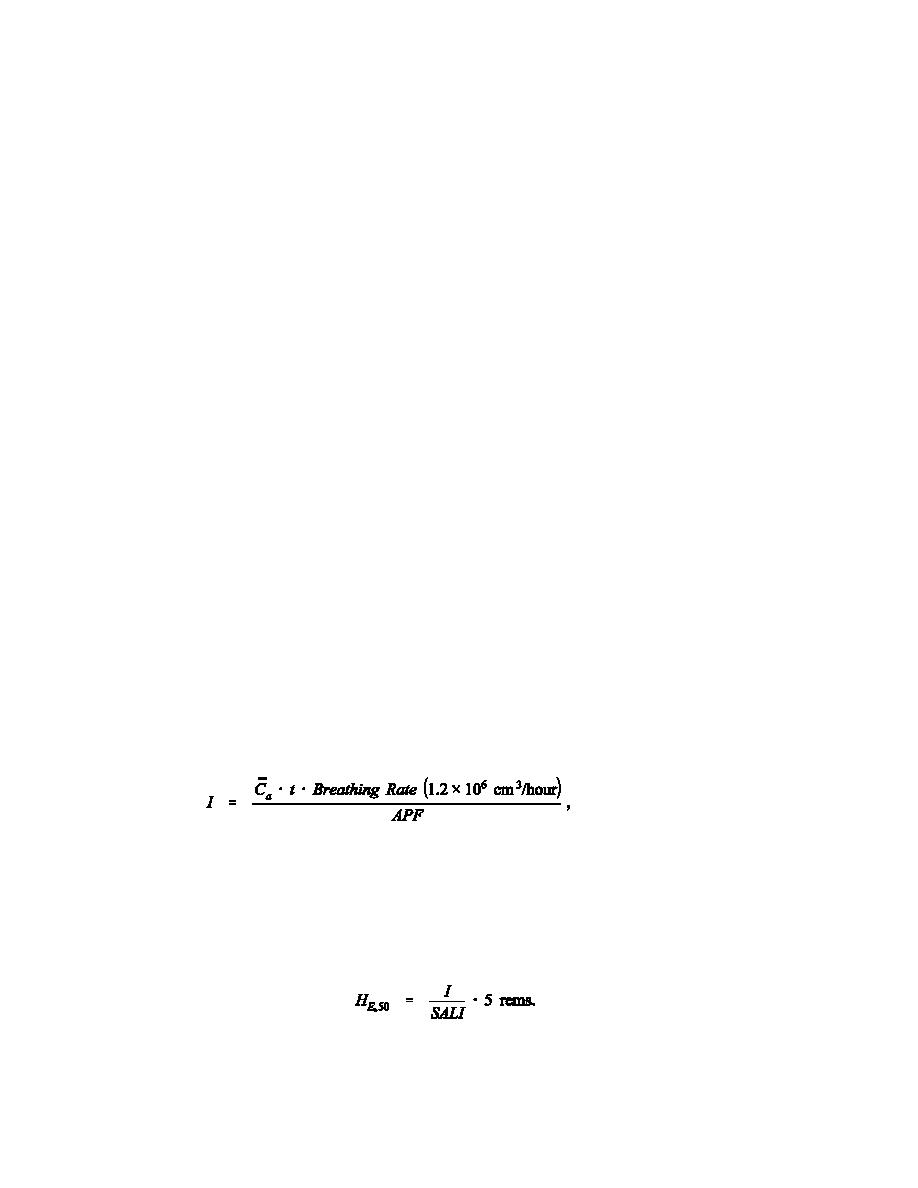 |
|||
|
|
|||
|
Page Title:
Calculation of Internal Dose from Workplace Data |
|
||
| ||||||||||
|
|  DOE-STD-1121-98
7.4.3 Special Considerations
Consideration must be given to dose assessment during treatment such as chelation or other
enhanced decorporation treatment. Chelation has been treated by a number of authors (Bhattacharyya et
al. 1992; Carbaugh et al. 1989; Goans 1996a; Goans 1996b; La Bone 1994a; La Bone 1994b). Another
special consideration is the evaluation of intakes that include natural materials such as thorium, uranium,
and radium. Thus, there are two distinct decisions to be made: whether a result differs from an analytical
blank, and if so, whether the amount detected is greater than what would be expected in a population that
is not occupationally exposed (Long et al. 1994; MacLellan et al. 1996). For example, the internal
dosimetry program at Hanford distinguishes between the environmental decision level LC and the
analytical decision level DL (Carbaugh et al. 1995).
7.5 CALCULATION OF INTERNAL DOSE FROM WORKPLACE DATA
The derived air concentration (DAC) is the quotient of the annual limit on intake (ALI; not tabulated
in 10 CFR 835) by the volume of air that Reference Man breathes in 1 working year (40 hr wk!1 50 wk
yr!1 1.2 m3 hr!1 = 2400 m3 yr!1 or 2.4 109 mL yr!1). The DACs are expressed in :Ci mL!1 or BqAm!3,
or, for radon and thoron progeny, in working levels (WL). For a stochastic ALI (denoted SALI), breathing
air at one DACs (stochastic DAC) for 2000 hours results in a committed effective dose equivalent (HE,50)
of 5 rems to Reference Man. For a nonstochastic or deterministic ALI (NALI), breathing air at one DACn
(nonstochastic DAC) for 2000 hours results in a 50-year tissue committed dose equivalent to tissue T
(HT,50) of 50 rems. Note that the DACs listed in Appendix A to 10 CFR 835 may be either stochastic
(denoted as "St" in the right-hand column) or nonstochastic (denoted by "BS," "K," "L," "SW," and "T"
[bone surfaces, kidneys, liver, stomach wall, and thyroid, respectively] in the right-hand column), so that
reference to other documents may be needed for dose assessment, such as Federal Guidance Report 11
(Eckerman et al. 1988) or the ICRP Publication 30 series.
7.5.1 Intake
For record-keeping purposes for radioactive materials other than the short-lived progeny of radon
and thoron, it is necessary to record intake, I (in :Ci),
(20)
based on a worker's exposure time, t (in hours); the average air activity concentration, 'a (in :Ci/cm3);
C
the breathing rate of Reference Man, 1.2106 cm3/hour; and the assigned respiratory protection factor,
APF (dimensionless; see below for details). In Eq. 21, it is acceptable to substitute the individual
worker's actual breathing rate if it has been measured and documented doing identical or similar work.
One acceptable method for determining HE,50 is
(21)
78
|
|
Privacy Statement - Press Release - Copyright Information. - Contact Us |